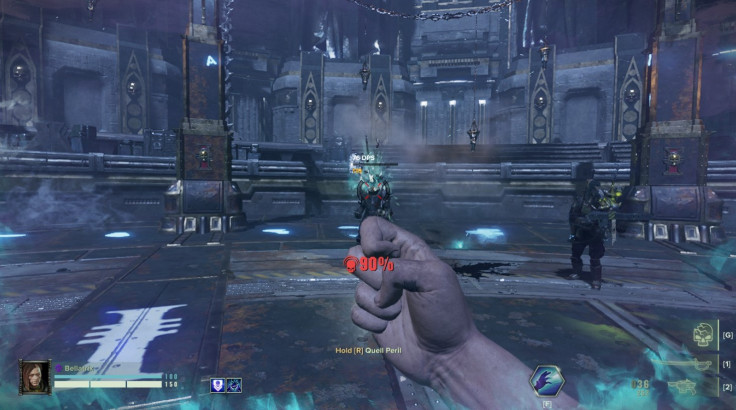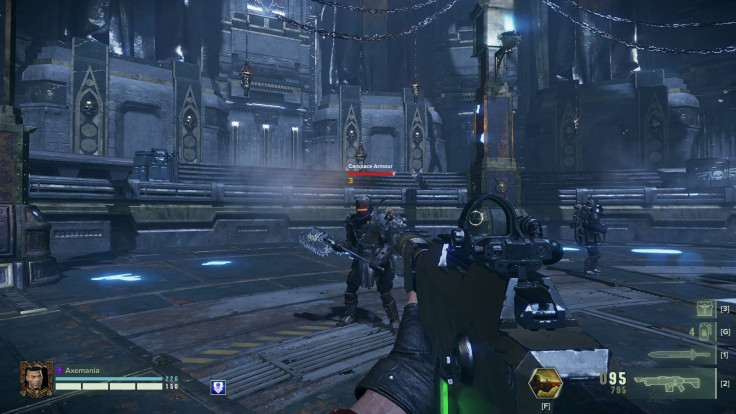'Darktide': Comprehensive Combat Guide For Tougher Difficulties

KEY POINTS
- Combat revolves around positioning, target priorities and quick thinking
- Always weave shoves and dodges when fighting in melee range
- Equip the right weapons to match the needs of the team
The first two difficulty levels in "Warhammer 40000: Darktide" are designed to ease players into the new game's general gameplay and experience. Meanwhile, Difficulties three and above are where players will truly be tested.
The jump in difficulty between Uprising and Malice is tremendous, and the curve becomes much steeper in Heresy and Damnation. However, these difficulty levels also tend to be more fun and rewarding.
Here's a full list of things new "Darktide" players need to keep in mind before diving into the higher difficulties.
Know Each Role
Player roles in the "Tide" series of games aren't as clear-cut as in other titles since jobs. Each class in the game has a designated role, but they aren't strictly limited to performing just that. The four roles attached to each class are:
- Specialist Hunter (Veteran)
- Elite/Boss Killer (Zealot/Psyker)
- Crowd Controller (Ogryn)
- Support
The Specialist Hunter is responsible for taking down enemies like Bombers, Shotgunners, Gunners, Hounds and riflemen squads. The Veteran class excels at this role because of their ranged weapon Feats and their general proficiency with ranged combat.
Elite/Boss Killers are meant to eliminate heavily-armored targets like Maulers, Crushers, Bulwarks and bosses. These players use specialized weapons like Boltguns, Chainswords, Force Swords and Thunder Hammers to deal immense single-target damage.
The Psyker class and its Brain Burst ability are designed to one-shot elites and deal immense damage to bosses. Zealots are also excellent for dealing big hits up close since their class ability guarantees a critical hit.

Any player with wide-sweeping melee weapons or AoE-based guns can fill the Crowd Controller role nicely. The Ogryn, in particular, can use their class ability to bowl through hordes of small enemies or stagger larger targets by hitting them directly with their charge.
The Support role applies to all classes and is generally affected by Feats. The Ogryn, for example, can revive allies without any fear of getting interrupted thanks to one of their class passives, while the Veteran can help restore Toughness for teammates by shooting enemies that are attacking friends in melee.
- Tip: It's best to have one weapon that excels at crowd control and another that can pierce armor
Weak Points
Contrary to usual FPS logic, the head isn't always the weakest point in "Darktide."
Maulers, for example, have stronger helmets that absorb significantly more damage than the rest of their body parts. Aiming for the chest is actually better versus these enemies.

Conversely, the common Scab melee swarmers have armored flak vests that absorb more damage. Aim for the head when fighting these guys.
As a rule of thumb, any bit of an enemy's body with any form of armor plating will absorb more damage than usual unless they are completely covered by just one form of armor. This applies to helmeted Dreg swarmers and armored Reapers as well.
Suppression
Shooting at or over the cover that enemies are hiding behind will cause them to be suppressed—they will not shoot back for a short while, giving players time to advance on their positions. The same applies to players, though, as taking suppressive fire will make returning shots much harder.
Push, Dodging and Block Attacks
Weaving is a combat technique that all players need to master before entering Malice difficulty and above. This is done by either dodging or shoving between attacks. Doing so helps players negate or avoid incoming damage.
Shoving enemies uses stamina, but dodging doesn't. However, the latter has a short cooldown period between each use. The dodge distance and cooldown duration differ based on what weapon the player currently has on their hands.
Ideally, this technique should always be used in every engagement. They are most useful in hordes or when cover is out of reach.
Block Attacks are done by blocking and then holding down the attack button. This move is great for shoving enemies away before following up immediately with a quick swing that varies depending on weapon type.
Incoming Hit Indicators
There is a sound effect that plays whenever a melee enemy is about to hit the player. Use this as a signal to dodge out of the way. It's especially useful for avoiding pesky Poxwalkers that might sneak up from behind.
Ranged enemies also have an incoming hit indicator. Before gunners shoot, players will see a glint of light flash from an enemy's position. When this happens, immediately dodge to the side to cause their initial burst to miss. This is especially useful for dodging snipers.
Ranged enemies like Scab and Dreg riflemen have near-perfect accuracy against players that are standing still, so dodge or sprint out of the way to make them miss. However, Gunners and Reapers still have a high chance of hitting players out in the open, which means it's best to wait in cover until they start reloading.

© Copyright IBTimes 2025. All rights reserved.





















